POLYNEMIDAE
Threadfins
By Hiroyuki Motomura
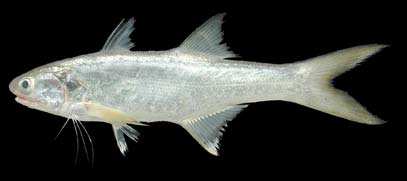 Eleutheronema tetradactylum |
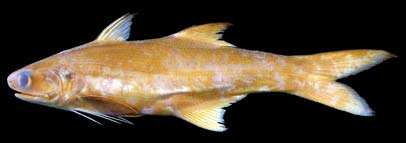 Eleutheronema tridactylum |
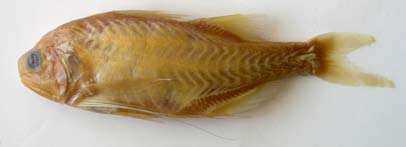 Filimanus perplexa |
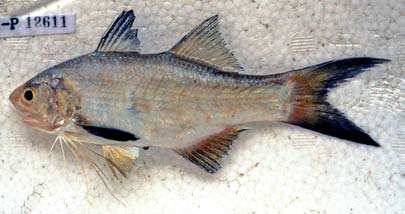 Filimanus similis |
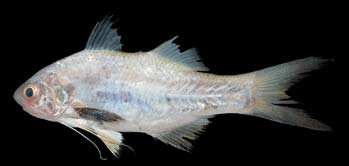 Filimanus xanthonema |
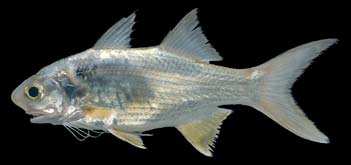 Polydactylus microstomus |
 Polydactylus plebeius |
 Polydactylus siamensis |
|
Body elongate to moderately deep, compressed; size from about 10 to 200 cm. Snout obtusely conical, overhanging. Adipose eyelid covering eye. Mouth ventral, near-horizontal and large; lip on upper jaw absent or poorly-developed; maxilla extending beyond level of posterior margin of eye; supramaxilla absent. Teeth villiform in broad bands on jaws, vomer, palatines and ectopterygoids (vomerine teeth absent in some species); canine, molariform or incisiform teeth absent. 7 branchiostegal rays, one ray present on epihyal. Two wellseparated dorsal fins; first dorsal fin with VII or VIII spines; second dorsal fin with a spine and 11 to 18 soft rays. Anal fin with II or III spines and 10 to 18 soft rays. Pectoral fins divided into an upper part with 12 to 19 rays joined by membrane and a lower part with 3 to 16 separate soft rays (pectoral filaments). Pelvic fins with I spine and 5 soft rays. Caudal fin deeply forked. Scales weakly ctenoid, extending onto head; scales covering most of dorsal, pectoral, anal and caudal fins; lateral line extending onto posterior margin of caudal fin; trisegmental pterygiophores absent. Vertebrae 10 precaudal and 14 or 15 caudal; supraneural bones 0 to 3. Color: silvery, golden or brown. A large black spot at anterior lateral line or several longitudinal dark stripes in some species. Similar families occurring in the area. Pectoral fin and filament characters (see above description) distinguish Polynemidae from all other families. Remarks. Taken over sandy or muddy bottoms in tropical and subtropical coastal, brackish and frshwaters. Feeds mainly on crustaceans and small fishes. Some species hermaphrodites. |

|
|